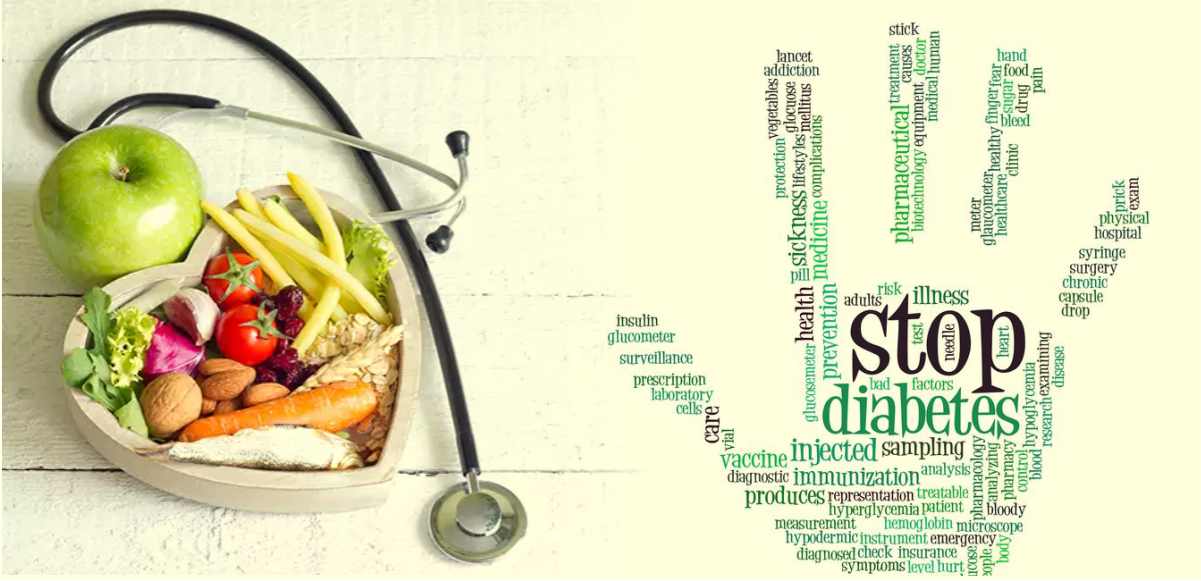

What is Diabetes? How is it Caused?
Insulin is a hormone which is produced in the body through the pancreas. It is used to process the glucose present in the food to pass through the body cells to produce energy. Diabetes is a chronic disease that leads to either absence of insulin in the body, a condition when the pancreas cannot produce the same; or the body fails to make good use of the provided insulin, known as insulin resistance.
Thus, the lack of insulin leads to high glucose levels in the body, known as hyperglycemia or diabetes mellitus, further leading to damage of organs and tissues.
Types of Diabetes
There are three main types of diabetes - Type 1, Type 2, and Gestational.
-
Type 1 Diabetes:
Juvenile-onset diabetes, as the name suggests, occurs in the early age groups, i.e., in teenagers and adults. It occurs due to damage of the beta cells. In such a case, there is a little or no production of insulin.
Ten percent of the total population of the country is diagnosed with Type 1 diabetes. People with this type often use insulin injections or insulin pumps to mild the sugar level as a diabetes treatment.
-
Type 2 Diabetes:
As per the International Diabetes Federation, 374 million people are at risk of developing Type 2 Diabetes. In this type, either enough insulin is not produced or repelled by the body cells. Type 2 Diabetes usually develops in people over 45 years of age who are obese and insulin repellent.
Nowadays, children and young teens are prone to it as well. This diabetes type is predominant and accounts for 90 per cent cases of all diabetes cases.
It is often dealt with diet and weight management, along with treatment like insulin shots and oral glucose-lowering medicines. Type 2 is often considered to be less complex when compared to Type 1.
-
Gestational Diabetes:
This type of diabetes occurs when there is high sugar content in the body during pregnancy. As the pregnancy progresses, the need for glucose in the body (needed for the child) also increases.
With hormonal changes occurring in the body, the insulin level is also affected. This leads to an imbalance of the glucose level. This type of diabetes does not happen to every pregnant woman, but to those who are:
- Overweight or were overweight before pregnancy
- Over 25 years old
- Have a family history
- Have Polycystic Ovary Syndrome (PCOS)
- Have medical condition like high blood pressure, high cholesterol level, heart problems or other issues.
Although the glucose level gets back to normal after pregnancy, 10% of the women usually acquire Type 2 diabetes post-Gestational diabetes.
Symptoms and Causes
Symptoms like dry mouth, followed by increased thirst and hunger (even just after eating), unexplainable weight loss, and frequent urination are common in this condition. Other symptoms include lethargicness, dry and itchy skin, slow-healing sores and cuts, blurred vision, yeast infections, and/or urinary tract infections.
Although medical sciences are unable to come up with specific causes of diabetes, we can state some risk factors that can increase the chances of getting diabetes.
- Family history of diabetes
- History of gestational diabetes
- Age
- Injury/harm to the pancreas
- Physical surgeries and illness
- Abnormal blood cholesterol level
- Overweight
- Use of steroids, or excessive medications
How to Prevent Diabetes with Family History?
More than 464 million adults in the world are dealing with diabetes, so there is a high chance of detecting one in the family. This number is expected to reach 700 million by 2045. If there is a family history of diabetic patients, it is likely that the offsprings may develop it too. It either comes as predominant diabetes or prediabetes.
People with prediabetes have a higher blood sugar level than normal but lower than what a diabetic patient has. People detected with prediabetes usually end up with type 2 diabetes. For diabetes care, one can deal with it by controlling weight, daily exercise and activity, eating the best food for diabetes control like the ones rich in fibre and whole grains, and regular consultation with doctors.
How to Prevent It at an Early Stage?
- Always keep track of your weight. Excess body fat, especially around the abdominal area, can increase the body's insulin resistance, which can lead to type 2 diabetes.
- Regularly indulging in physical activities can help in weight management and reduce blood glucose levels, resulting in an improvement of cholesterol and blood pressure. Research states that aerobic exercising and resistance training can help control diabetes.
- Always follow a healthy and balanced diet, keep a check on various factors, especially fat. Cut back salt content, incline more towards fruits and vegetables. The fibre in the diet can control blood sugar levels, thus reducing the risk of cardiac diseases as well.
- Quit smoking and limit the alcohol content in the body. Chain smokers and drinkers are more than likely to develop diabetes.
Healthy Food Options for Diabetes Patients
-
Protein-rich food:
Fish, eggs, beans, etc.
-
Healthy Fats:
Nuts and Seeds, olive oil, dry-fruits, etc.
-
Fibrous Food:
Leafy Greens, Broccoli, fruits like banana, and more.
Diabetes being a chronic disease leaves a life-long effect not only on the body but also on the psychological state of mind. If not appropriately treated, the disease can create a loop of numerous underlying diseases by harming the body's internal organs.
If there is a family history of diabetes involved, it is imperative for the person to take preventative measures and be proactive in taking steps when it comes to their health. If not cured, the symptoms can surely be delayed or mellowed down with a balanced diet and daily exercise.
We hope this article helped you out. Stay tuned for more health-related content.
